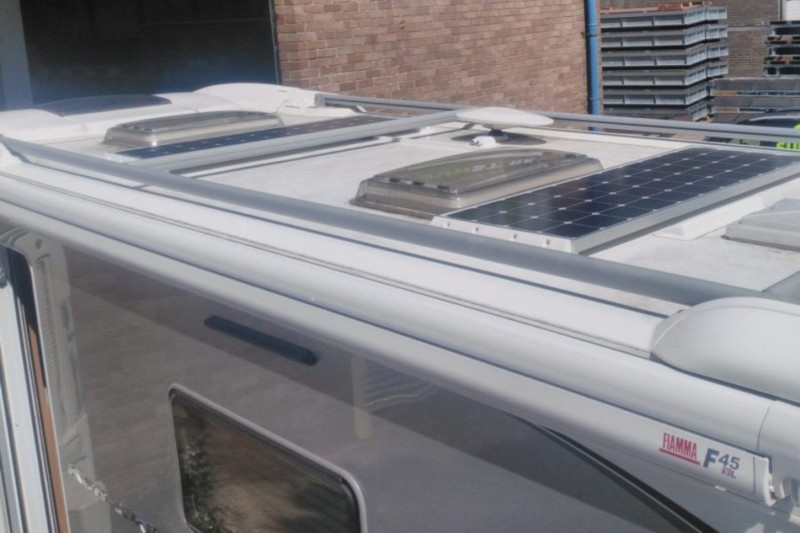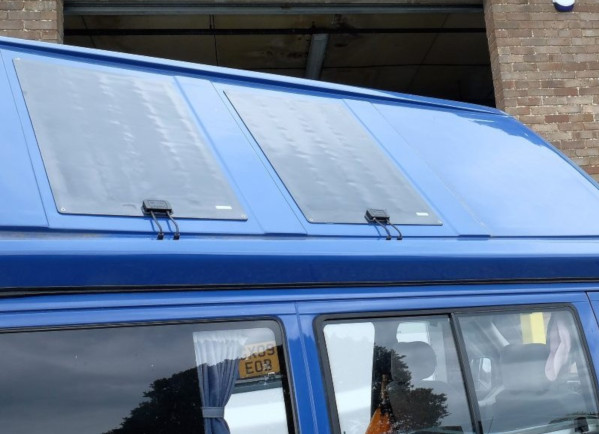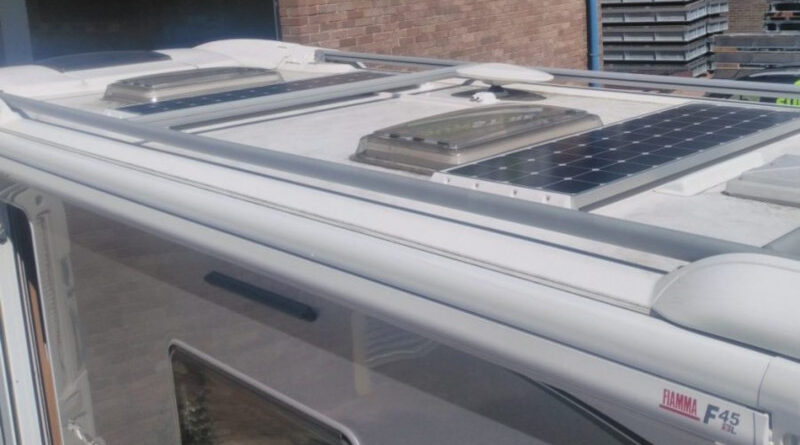Guide to Solar Power for Leisure Vehicles

For motorhome travellers like us who prefer to stay off the grid and away from campsites, one problem is making sure your leisure batteries stay well charged. Long driving days usually do the trick, but if you’re travelling short distances then you may not put enough charge into your leisure batteries to recharge them fully.
A generator is one solution, but to be honest we think generators should be a last resort – they’re noisy, polluting and must sit outside your vehicle. They’re certainly not a clean or discreet solution.
We’d prefer to rely on solar panels where possible. These are a clean, automated and more elegant solution to the problem of off-grid power. Panels are lighter, cheaper and more efficient than ever these days, so in good weather at least, solar panels may be able to provide all the power you need.
If you’re new to solar you may be unsure where to start and what you’ll need. To help you get started, the good people at West Sussex-based Motorhome Workshop have produced this guest post for us, covering the basic requirements for a solar energy system for leisure vehicles. The post also highlights some considerations unique to motorhomes or caravans that you may not have thought of.
[This is a guest post from www.motorhomeworkshop.co.uk]
What’s in a solar power system?
All solar power systems are made up of several components.
They are:
- Solar panels to generate the energy from the sun
- Charge controller to manage battery charge and prevent battery damage
- Panel mounting to stand or mount the panel for use
- Cables and connections to make it all work
This type of system is similar to a home solar power setup except the energy you generate will be used to recharge your leisure battery.
To make life a little easier, you can buy complete solar power kits that contain everything you need to put a leisure vehicle solar power system together. All you will need is the kit, some basic tools and some free time. A good kit will come with all the instructions you need.
Leisure vehicle solar power considerations
There are some considerations specific to leisure vehicles that are worth bearing in mind if you’re thinking of a solar power system.
Those considerations include:
Size of solar panel
The size of the solar panel(s) dictates the generation potential of your system. Our most popular panel is 120w which for most people generates enough to keep your battery topped with a little capacity to spare.
That spare capacity is useful for cooler months or overcast days when the sun isn’t very strong. It balances providing enough power for everyday use with extra capacity for those overcast or shorter days.
For a more detailed idea of what you will need you can use a solar panel calculator like this one on Parked in Paradise.
Roof mounted or portable
Solar panels can be fixed to the roof of your caravan or motorhome, set on a ground mount or set up in the windows of your vehicle. Each has pros and cons you should take into consideration.
Roof mounting makes use of otherwise unused space, allows you to charge your battery while on the move and doesn’t need setting up when you stop. Roof mounting can require drilling, but roof mounting can also be achieved with a bonding agent and plastic mounts. Roof mounted panels are inconvenient to clean and a dust covered panel will reduce its efficiency.
Ground mounting uses an angled rack with the solar panels fixed to it. When you park, remove the rack, point it to the sun and you’re good to go. The benefit is that you can angle panels in whatever direction you need and they are easy to clean.
The downside is that you need to be manually set up and connected every time you park. Similarly, setting panels up behind your windows is likely going to mean putting them up and taking them down regularly. In addition, a panel behind glass or plastic will work but will be less efficient.
In general, we find most people preferred the roof mounted setup.
Polycrystalline or monocrystalline
Solar panels come in two main types for vehicles, polycrystalline and monocrystalline.
Polycrystalline solar panels are constructed from multiple silicon pieces and are bluish in colour. Polycrystalline solar panels are less ‘pure’ than monocrystalline so are slightly less efficient. They are also cheaper.
Monocrystalline solar panels are constructed from a single piece of silicon and are usually black. These panels are purer and are more efficient. They are also more expensive.
Of the two, we tend to recommend monocrystalline solar panels for leisure vehicles. They are more efficient, can be smaller in size for the same generational potential and work best in low light.
Rigid or flexible solar panels?
Solar panels can either be rigid or flexible. Rigid solar panels usually come in a lightweight frame that is mounted in place. Flexible solar panels are lighter and can fit curved roofs. They are usually bonded onto the roof and then connected to the system.

As long as there is suitable roof space, we suggest rigid panels. The frame allows airflow around the solar panel keeping it cool. They are also cheaper than flexible panels at the moment.
Charge controller
The charge controller manages the energy generated by solar panels. It feeds it into the battery, prevents the battery from being overcharged and ensures power only flows in the intended direction.
There are two types of charge controller suitable for leisure vehicles, PWM and MPPT.
PWM charge controllers are simple devices that use a switch to control energy fed to the battery. They are cheap but are also limited in their effectiveness and cannot cope with mixed battery voltages.
MPPT charge controllers are more advanced electronic devices. They are more expensive than PWM but have been seen to be up to 30% more efficient than PWM charge controllers in partially shaded and overcast conditions. Which is something we have tested for ourselves! On balance, we recommend MPPT charge controllers as we feel this is where you get the most for your money.
We hope that you have found this article useful!

